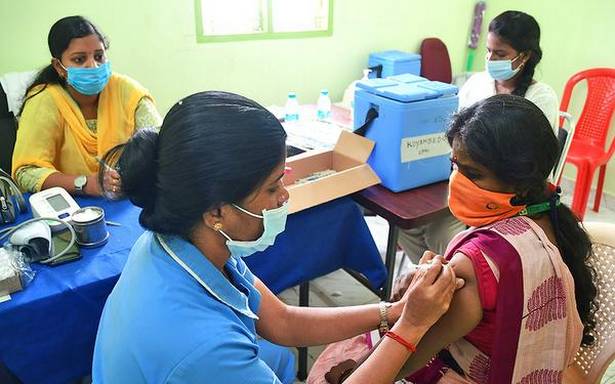Article in RBI bulletin flags risks to recovery including from rising COVID-19 infections, price pressures
Barely a day after the U.S. 10-year Treasury yield rose to its highest level in more than a year after investors interpreted the Federal Reserve’s dovish policy stance as being not adequately mindful of inflation risks, an article in the latest monthly edition of the Reserve Bank of India’s Bulletin cautioned that bond vigilantes could undermine a global economic recovery, ‘unsettle financial markets and trigger capital outflows from emerging markets’.
“The Reserve Bank is striving to ensure an orderly evolution of the yield curve, but it takes two to tango and forestall a tandav,” RBI officials led by Deputy Governor Michael D. Patra wrote in the ‘State of the Economy’ in the March bulletin.
Noting that with countries rushing to inoculate their populations, the global economy should regain lost momentum in the second quarter, the RBI’s researchers asserted that bond vigilantes were riding again, “ostensibly trying to enforce law and order on lawless governments and central banks but this time around, they could undermine the economic recovery and unsettle buoyant financial markets”.
“As growth forecasts for 2021 are ratcheted up, they see in them the spectre of long dormant inflation, the archenemy of bonds as it erodes the real value of the fixed income they provide,” they wrote.
“Fears over U.S. interest rates have already started spilling over on to emerging market economies (EMEs). Investors have started pulling out money from EME stocks and bonds in an abrupt ending of a streak of inflows that had remained uninterrupted since October 2020,” it added.
The RBI’s article cited the Institute of International Finance (IIF) as having pointed out that foreign investment had turned negative in emerging market equities and debt from the latter part of February, ‘bringing back fears of the 2013 taper tantrum’.
“While the external balances and debt profiles of many emerging economies are in better shape today than in 2013, they are not immune,” the article’s authors warned.
India’s S&P BSE Sensex and Nifty equity indices both declined more than 1% on Thursday, extending their slide to five straight sessions amid concerns about fund outflows and the resurgence in COVID-19 infections across the country. The benchmarks, however, recouped some losses on Friday after they ended the session with gains.
Referring to the rising number of cases, the RBI officials cautioned: “India is poised on the cusp of two tipping points. First, there are ominous signs that infections are rising. A second wave? Time will tell. On the other hand, vaccinations have moved beyond health workers to senior citizens, but at 3.3 crore as on March 16, the entire process needs to be speeded up.”
The article’s authors also flagged building price pressures as the other tipping point. “Second, inflation has witnessed upside pressures. In fact, excluding vegetables, headline CPI inflation has moved in a tight range of 5.8 to 6.4% from June, testing the upper tolerance band of the inflation target. Global oil markets are experiencing hardening of prices and production restraints. The ratcheting up of input prices to multi-year highs pose a dilemma — if they are passed on to consumers as pricing power returns to firms as aggregate demand picks up, there will be even higher inflation; if they are held back, profitability will be eroded as will gross valued added in the economy. India is in a strange place — rising prices amidst plenty.”
Notwithstanding this, they said there was a restless urgency in the air in India to resume high growth, “with signs that the capex cycle is uncoiling and turning, and earnings results of corporates having beaten market expectations.”


